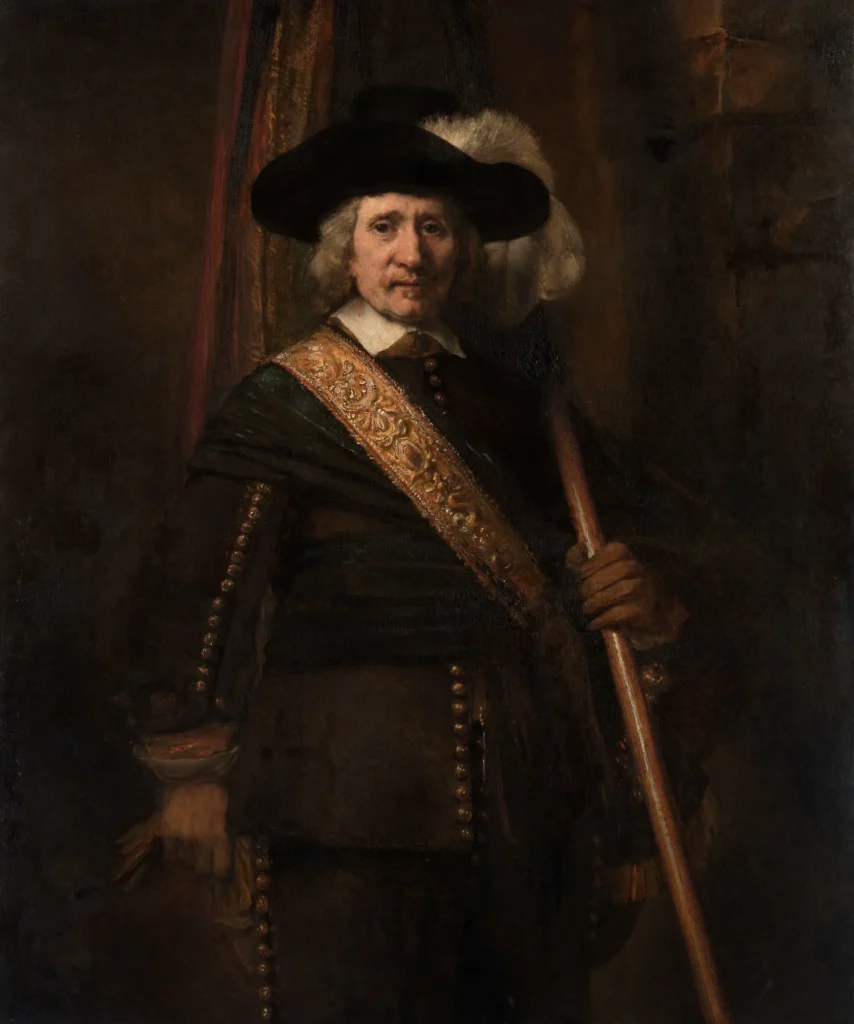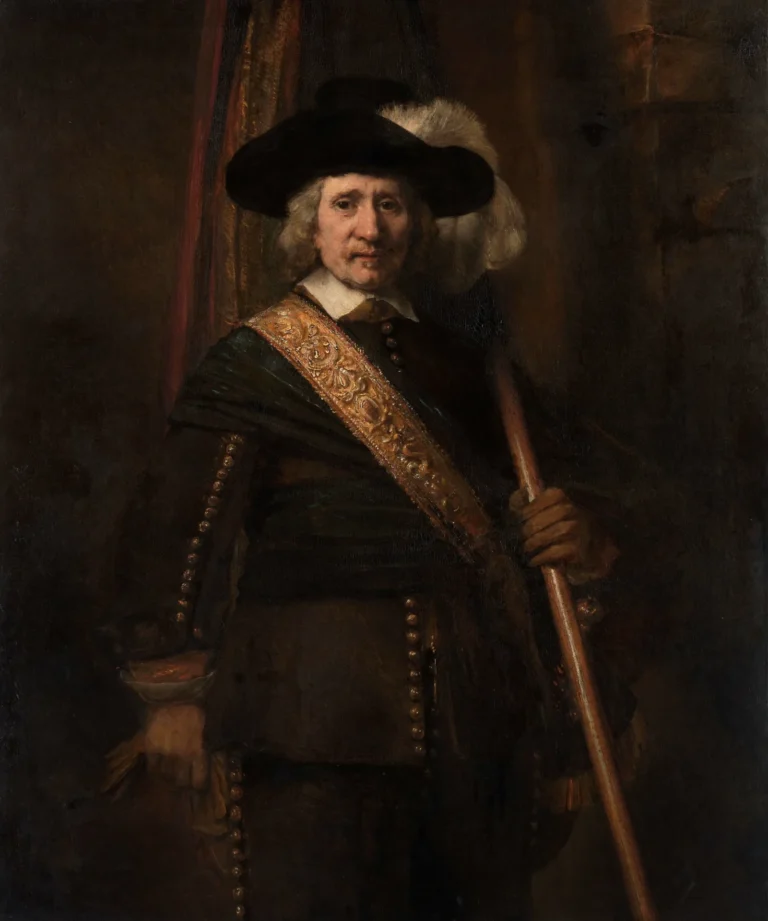Portrait of Floris Soop
The Portrait of Floris Soop is an exquisite depiction of a Dutch nobleman created around 1654, attributed to the illustrious Rembrandt van Rijn, despite ongoing discussions about its authenticity. The painting elegantly portrays Soop in elaborate garments, with a striking use of chiaroscuro that highlights his dignified stature. The dark background accentuates the figure, drawing viewers into the rich context of Dutch Golden Age portraiture. This artwork not only reflects the artistic mastery of the time but also the socio-economic prominence of its subject, a member of the Dutch East India Company.
Year 1654
About the Artwork
Did You Know
Liked what you see? Add it to your collection.
Enjoyed reading? Share it.
... continued
The Portrait of Floris Soop is a painting attributed to the Dutch master Rembrandt van Rijn, although the attribution has been a subject of debate among art historians and experts.
Floris Soop was a Dutch nobleman and a member of the Dutch East India Company. The portrait, which is believed to have been painted around 1654, depicts Soop in a formal and dignified manner, consistent with the portrait style of the time.
The painting is characterized by Rembrandt's use of chiaroscuro, a technique that uses strong contrasts between light and dark to create a sense of volume and depth. The subject is shown wearing elaborate clothing and a hat, and the background is dark and muted, which helps to focus attention on the subject.
However, as mentioned, the attribution of this work to Rembrandt has not been universally accepted. Some art historians have questioned whether the painting is entirely the work of Rembrandt or if it might be a work by one of his pupils or followers. Despite these debates, the Portrait of Floris Soop remains an important work within the context of Dutch Golden Age painting.










